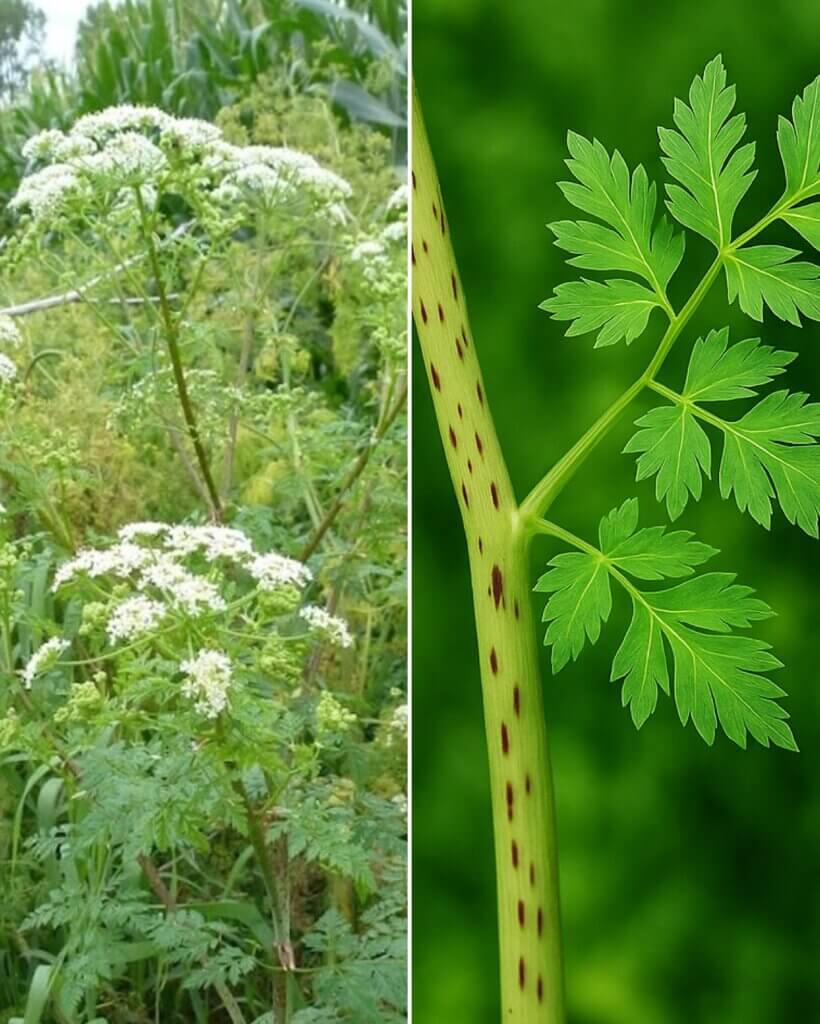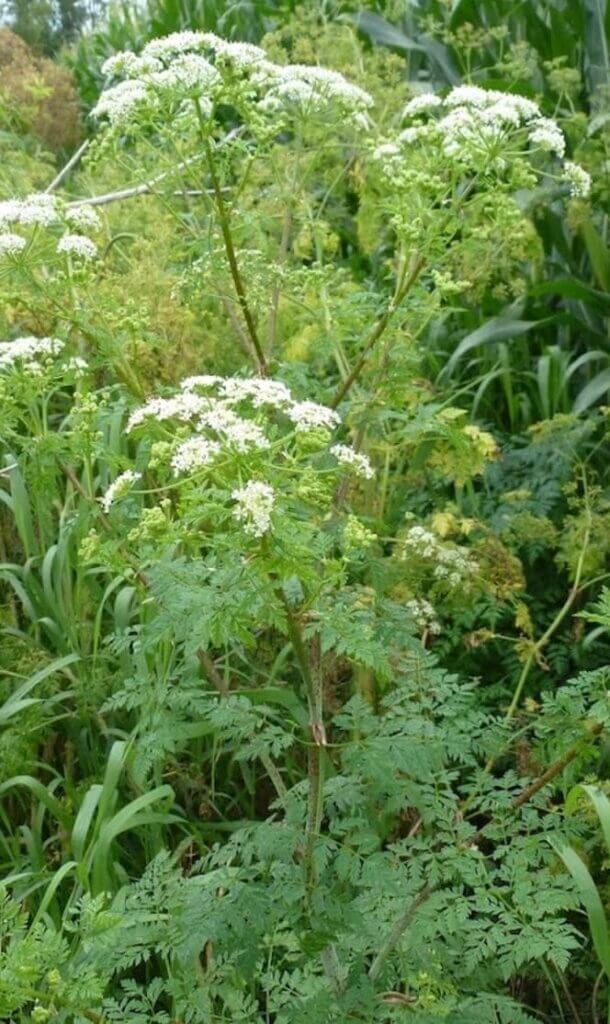
⚠️ Poison Hemlock (Conium maculatum): Beautiful but Deadly 🌿
As spring arrives with its lush greenery and blooming fields, one plant you need to watch out for is Poison Hemlock. Though it looks harmless and even pretty, this plant is one of the most toxic wild plants found across North America and Europe.

🌿 What Is Poison Hemlock?
Poison Hemlock is a biennial plant in the carrot family (Apiaceae) that grows up to 6–10 feet tall. It is often mistaken for wild carrot (Queen Anne’s Lace), parsley, or other edible plants. However, consuming even a small amount of Poison Hemlock can be fatal.
🔍 How to Identify It:
Here are the key features to help you recognize Poison Hemlock:
- Stem: Smooth, hollow, and covered in distinctive purple or reddish blotches. This is the clearest warning sign.
- Leaves: Finely divided and fern-like, resembling parsley or carrot tops.
- Flowers: Small, white flowers grouped in umbrella-shaped clusters (called umbels), blooming in late spring or early summer.
- Smell: Has an unpleasant, musty or “mouse-like” odor when crushed.
- Habitat: Common along roadsides, rivers, fence lines, meadows, and disturbed areas.
⚠️ Why Is It Dangerous?
All parts of the plant — roots, stems, leaves, flowers, and seeds — contain toxic alkaloids (especially coniine and gamma-coniceine), which affect the nervous system.
Even a small dose can be deadly if ingested, and the toxins can be absorbed through broken skin or mucous membranes.
☠️ Symptoms of Poison Hemlock Poisoning:
- Nausea and vomiting
- Salivation
- Confusion or dizziness
- Muscle paralysis
- Respiratory failure
- Death (in severe cases, death can occur within hours)
There is no known antidote. Medical help is urgent if poisoning is suspected.

🧤 Handling Precautions:
- Do not touch the plant with bare hands.
- Always wear gloves and protective clothing when removing it.
- Avoid burning it — the smoke can be toxic.
- Wash hands and tools thoroughly after contact.
- Never forage wild plants unless 100% sure of their identity.
❗ Common Look-alikes (But Harmless or Edible):
- Queen Anne’s Lace (Wild Carrot): Hairy stem, no purple blotches. Has a single dark flower in the center of the umbel.
- Cow Parsnip: Much larger leaves, different odor.
- Yarrow or Wild Parsley: Smaller overall size and lacks the toxic stem pattern.
📌 Final Thoughts:
Poison Hemlock is a serious threat disguised as a harmless wildflower. If you see it on your property or in public spaces, notify local authorities if needed, and keep pets and children far away.
When in doubt — don’t touch it, and don’t taste it. Safety first. 🌿🚫
